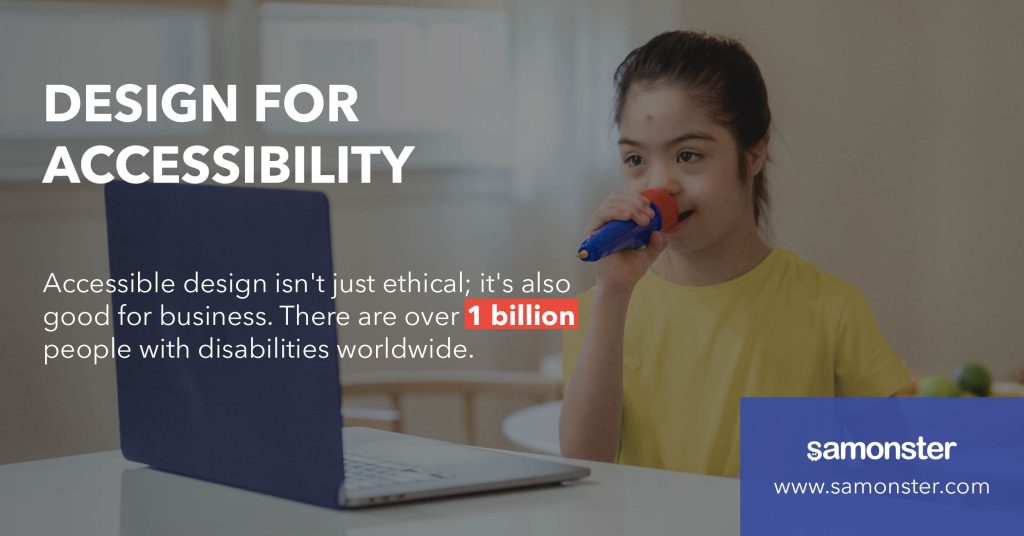Designing for Accessibility
Creating Inclusive Design
Accessibility is more important now than ever. It is not just a legal requirement; it’s a moral choice and a demonstration of inclusivity in our products. Digital experiences must be accessible for everyone, regardless of disabilities.
Accessible design empowers everyone to participate fully in the digital world, ensuring that no one is left behind.
what is Accessibility
Accessibility, in the context of design, refers to making digital content and technology usable by individuals with impairments. These disabilities range from visual, auditory, motor, and cognitive impairments. Here are some key considerations when designing for accessibility:
Auditory Impairments
Deaf or hard-of-hearing users may require captions or transcripts for multimedia content and visual cues for auditory feedback.
Visual Impairments
Users with visual impairments may rely on screen readers or braille displays. Design should prioritize semantic HTML, alt text for images, and high contrast for text and backgrounds.
Cognitive Impairments
Users with cognitive impairments may benefit from clear and concise content, consistent navigation, and intuitive user interfaces.
Motor Impairments
Users with motor impairments might use assistive technologies like voice commands or specialized input devices. Design should allow for keyboard navigation and avoid relying solely on mouse interactions.
Why Accessibility Matters
Demand for accessible designs has been increasing over the years.
- Inclusivity: Designing with accessibility ensures that your digital content and services are available to everyone, regardless of their abilities. It promotes inclusivity and diversity.
- Legal Compliance: Many countries have laws and regulations that require digital content to be accessible. Failure to comply can result in legal consequences and reputation damage.
- Expanded Audience: An accessible design expands your potential audience. It accommodates individuals with disabilities and elderly users who may face age-related limitations.
- Improved User Experience: Accessibility often leads to a better user experience. Clear navigation, readable text, and organized content benefit everyone.

Practical Tips
Here are some practical tips for accessible design:
- Semantic HTML: Use proper HTML markup for headings, lists, links, and form elements. Semantic HTML helps screen readers interpret content correctly.
- Alt Text: Provide descriptive alt text for images. Avoid generic labels like “image123” and instead describe the image’s purpose.
- Keyboard Navigation: Ensure that all interactive elements can be accessed and used via keyboard navigation. Test your website using only a keyboard to identify any issues.
- Captions and Transcripts: Include captions for videos and transcripts for audio content. This benefits users with hearing impairments and also aids in search engine optimization.
- High Contrast: Opt for a high-contrast color scheme for text and backgrounds to improve readability, especially for users with visual impairments.
- Accessible Forms: Use labels and placeholders in forms to provide context for form fields. Indicate required fields and offer clear error messages.
- Testing and User Feedback: Regularly test your designs with accessibility tools and seek feedback from users with disabilities to identify and address issues.

Conclusion
Designing for accessibility is not an optional feature; it’s an integral part of creating digital experiences that respect the dignity and rights of all individuals. Designers have the power to make a positive impact and ensure inclusivity. Accessibility makes digital experiences welcoming to everyone, regardless of their abilities.